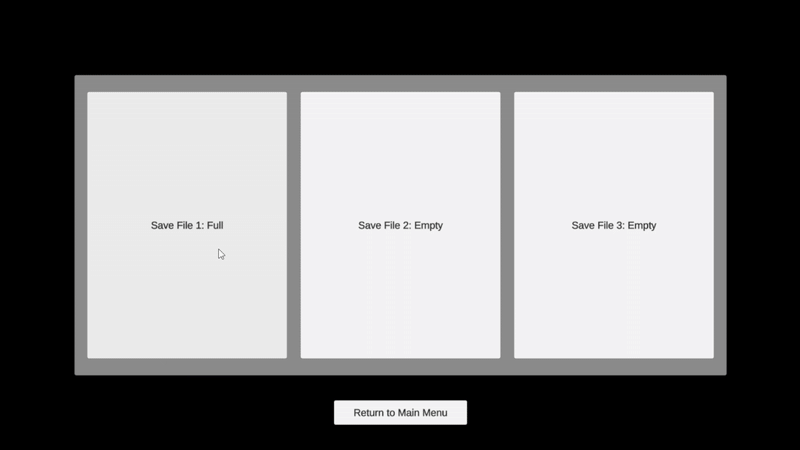Save System
Personal Project
The Need This Fulfills
In many games, players' progress, preferences, and other data need to be saved so they can continue later, but storing complex data in a way that's both compact and easy to load can be tricky. Without an efficient save system, it can be difficult to store large amounts of data, and loading it back into the game can be slow or prone to errors. A save system that serializes data and uses binary formatting solves this by converting the game data into a compact, standardized format that can be easily stored and retrieved. This makes saving and loading faster, more reliable, and less resource-intensive, while keeping the file sizes small.
Unity Engine Binary Save Files
Save System
I built a save system in Unity which handles saving and loading game data using binary serialization. It works by converting the game data into a binary format and writing it to a file stored in the device’s persistent data path. When the game needs to be saved, the SaveGame method takes the current game state, serializes it, and writes it to a file. This ensures that the data is stored even after the game is closed and reopened.
When loading the game, the LoadGame method first checks if a save file exists. If the file is found, it reads the binary data, deserializes it back into a usable SaveData object, and returns it. If no save file is found, it creates a new default SaveData object instead. It supports multiple save slots by allowing different save files to be loaded based on a fileNumber parameter. Instead of using a single fixed save file, the system constructs a file path dynamically using the provided number, enabling multiple save states.
Save Files
This SaveData class is designed to store the player's progress and game state for saving and loading purposes. It holds various serialized variables which are then used by the save system to create the save file on the players machine, in the case of this project it stores various data about resources for the player. The class provides getter and setter methods to access and update its data safely, and it includes functions for altering the data. This structure ensures that resource management remains efficient and can be easily saved and loaded using the SaveSystem.
